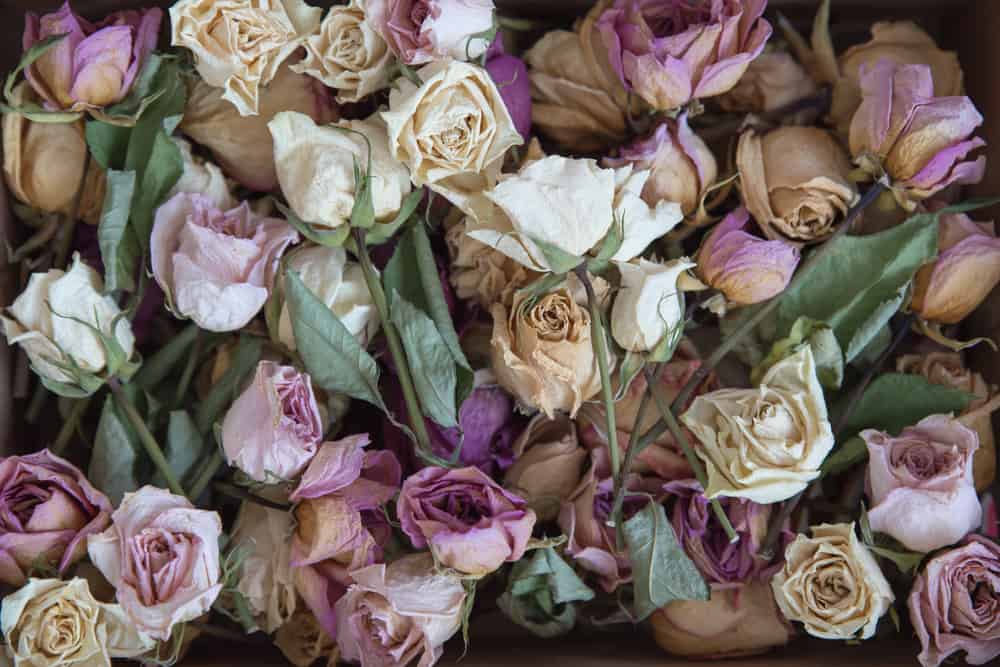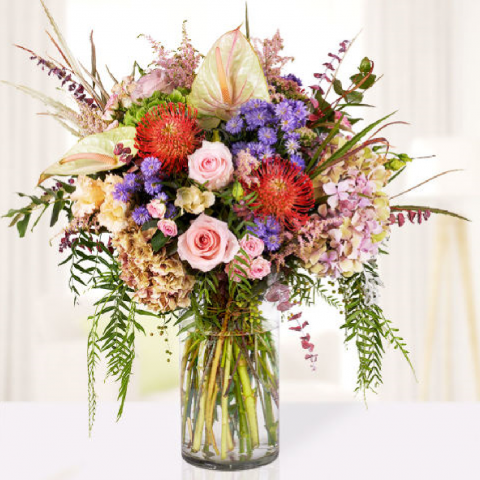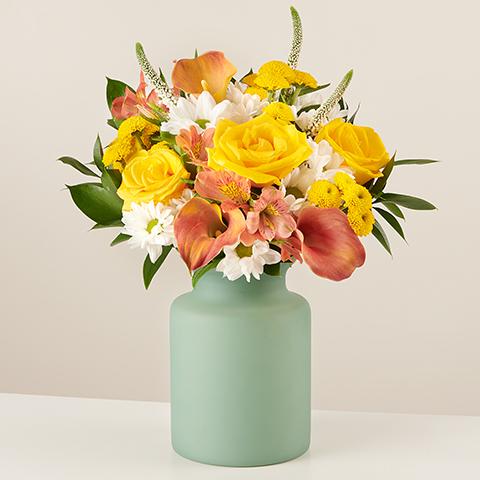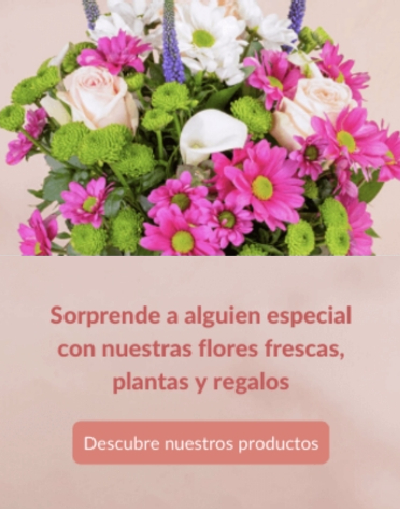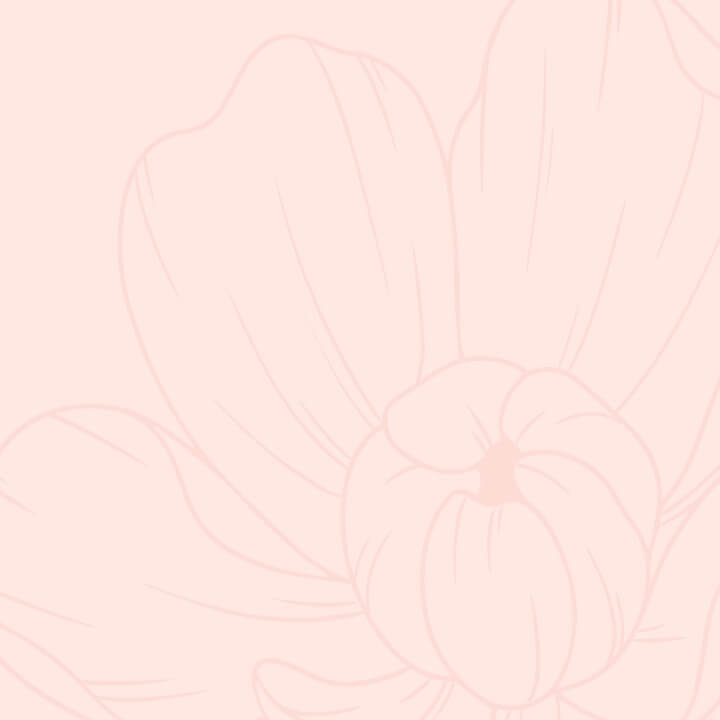Losing someone close to your family, a friend, or a colleague is a hard moment. More often than not, we offer flowers after death as a sign of sympathy. History shows that chrysanthemums and white carnations are associated with death, and they are not the only ones. These are the flowers that symbolize loss and send a strong message at a funeral for this time of mourning.
As you read this, you can learn the following:
* The Chrysanthemum and the White Carnation
* The Language of Death Flowers
* Choosing the Right Colors
* Funeral Floral Arrangements
The Chrysanthemum and the White Carnation
Traditionally, mourning flowers are offered at funerals and burials. This flowery tribute to the deceased during a ceremony is rooted in many societies. Where does this custom come from, and what significance does it have? Placing chrysanthemums on the burial site is rooted in French history. During the first armistice following the First World War, the graves of French soldiers were decorated with flowers in their memory. The chrysanthemum has become a flower expressing death and mourning, and this action is a must on All Saints’ Day, the feast during which relatives honor the saints and the deceased.
Today, many colors of chrysanthemums bloom in the graves and give color and life to the cemeteries. Every year, more than 25 million pots of chrysanthemums decorate the tombs in France.
The carnation symbolizes eternal grief, love, and loyalty. This flower has long been the flower of mourning. The white carnations signify deep sorrow, combining a powerful symbol of death, sadness, and respect. When you are at a loss for words, ceremonial flowers allow your emotions to be expressed in silence. If you are not present at the funeral, it is still possible to have flowers delivered directly to the funeral site. Thus, even from a distance, the tribute to the deceased remains highly appreciated, and a floral arrangement serves as a message to show support. While flowers give beauty at the funeral, they also symbolize hope for an everlasting life. Flowers are, therefore, a beautiful sign of sympathy.
The Language of Death Flowers
On All Saints’ Day and all year round, discover the language of flowers and their meanings. It allows you to express sorrow and grief when you lose a dear one. Flower arrangements are popular in cemeteries. Initially, you can offer these flowers to the loved ones to show comfort but also pay a last tribute to the dead. They are also associated with rebirth or a new beginning. Ephemeral, they remind us of the fragility of life. In any case, they are not chosen at random.
The carnation is a symbol of grieving, eternal love, esteem, and care. Molière would have died with a carnation on stage. Since then, some have accused the plant of casting the evil eye, especially on actors. They avoid offering it to the living and reserve a special place for it in cemeteries. In several southern European countries, the white carnation has long been the flower of the dead. Loyalty is expressed by the white, while passion is shared by the red.
Chrysanthemums are linked with celebrations, events, and significant stages of life. It invades tombs on All Saints’ Day. Chrysanthemums require little maintenance and adapt to harsh climates, making them a hardy plant and synonymous with eternity. The lily is a sign of purity. Associated with the Virgin Mary, it is often found on coffins at burials, especially in the Catholic religion. Cineraria, cypresses, and blue, yellow, or white-rayed hemlock express the pain of the heart. The soapwort is similar to sadness. In the same vein, the immortal, the yew branch, the mauve rose, the blue columbine, and the purple anemone evoke regret and, more broadly, death.
Choosing the Right Colors
Today, there is more freedom in the choice of funeral compositions. More and more relatives are trying to make crowns adapted to the personality of the dead, following their tastes or ages. Thus, contrary to what one might think, bright colors are not to be proscribed and bring a note of hope to the graves. FloraQueen florists specialize in funeral arrangements that can guide you in the creation of bouquets, depending on the context. Here is the meaning of colors:
* Blue: Nature, infinity, peace, calm, serenity, freshness, sensitivity.
* White: Purity, balance, innocence, calm, peace, serenity, light.
* Grey: Sadness, depression, helplessness, loneliness, boredom.
* Yellow: Joy, energy, tonicity, dynamism.
* Black: Fear, anguish, the unknown, loss, emptiness.
* Orange: boldness, intelligence, loyalty, confidence/mistrust, warmth, radiance.
* Pink: Innocence, gentleness, romanticism, calm, peace, serenity, tranquility, trust.
* Red: Love/hate, passion, temptation, fire, blood, emotion, anger, strength, power, power, energy, perseverance, struggle, determination.
* Green: naturalness, balance, permission, freshness, happiness, harmony, success, energy, optimism, youth, calm, serenity.
Funeral Floral Arrangements
If you are reading this section, you may find this assignment overwhelming and emotionally painful, especially since many societies don’t talk much about death unless you are confronted with it. More importantly, how do you choose a floral arrangement that honors a loved one who has passed away? There are no flowers in the world that are beautiful enough to do that. For centuries, we have used these wonders of nature to help us mourn the death of our loved ones: flowers. Here is a description of the most common types of funeral bouquets, their uses, and what they symbolize.
Wall Sprays: Families and groups often purchase them. Wall wreaths are renowned for their size. They stand out by being on the wall or a stand at the funeral home or church. The base of a wreath is not visible as in a standard bouquet since they are two-sided arrangements. Like all funeral arrangements, wall wreaths can be very colorful, single color, traditional, or modern.
Wreaths: One of the most recognizable funeral arrangements, the wreath, stands on a support such as a heart, cross, and wall sheaf. Wreaths vary from 56 cm to 102 cm in diameter. They are usually chosen by color first and then by the flower. The traditional wreaths are made of chrysanthemums and carnations, which are less expensive. As the size increases, the variety of flowers can grow. Wreaths require more work and expertise; therefore, they cost more than other arrangements of the same size. Also, the flowers are placed in a damp moss that allows them to last only a few days.
There are many ways to show your comfort when you lose a loved one. Sometimes, death can be very painful and overwhelming. If you don’t know which flowers to choose for a funeral; look no further, the chrysanthemum is certainly the best choice. Also, sympathy cards, messages of condolence, flowers or plants, food, and small gifts are just a few ways to express your compassion. Attending a funeral or memorial service to present your condolences in person is another meaningful gesture. Many varieties of flowers have their place in funeral ceremonies.
